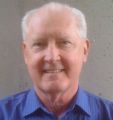FLASHBACK TO 2006: A message from Barry Penner, former Minister of the Environment, lauded the success of the Water Sustainability Action Plan for British Columbia

“I am pleased with the continuing success of the partnership in providing program delivery for the Water Sustainability Action Plan for British Columbia,” stated Barry Penner. “This initiative is all about sharing information and promoting water stewardship at the community level. I value the important role this partnership is playing in promoting water awareness and supporting communities to integrate water management practices with local land use planning and development programs.”










